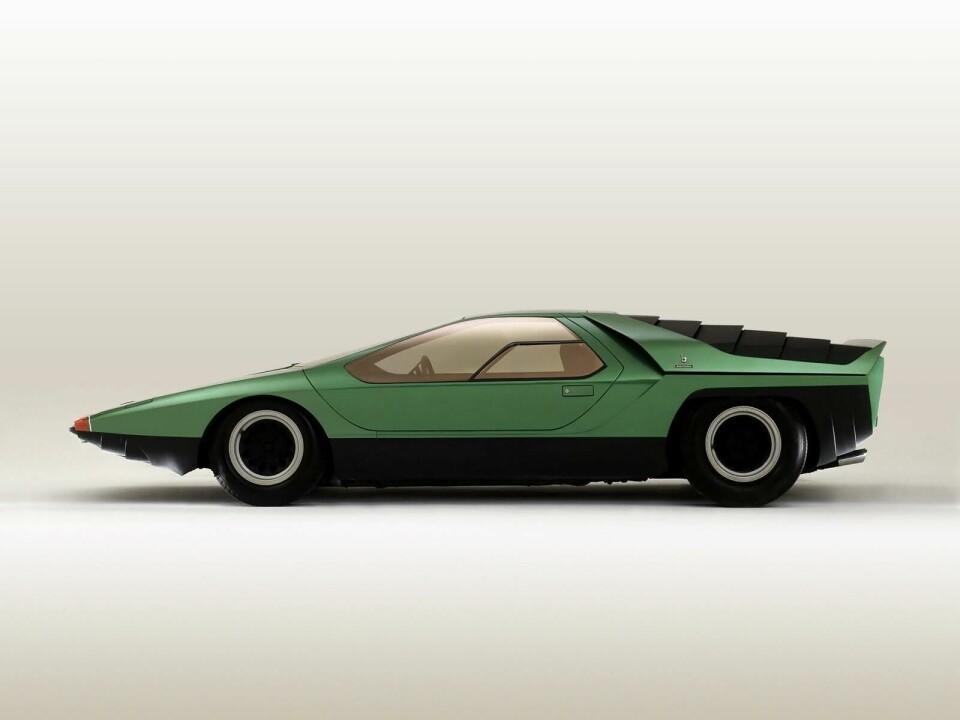
Concept Car of the Week: Bertone Alfa Romeo Carabo (1968)
Marcello Gandini’s Carabo for Alfa Romeo pioneered a distinct design language, influencing automotive icons such as the Lotus Esprit and Lamborghini Countach
It might sound unbelievable today, but despite its racing pedigree and a voluptuous body designed by Franco Scaglione, Alfa Romeo was struggling to sell the outstanding 33 Stradale. Its heavy price tag was far above that of a Lamborghini Miura and also 120hp less powerful.
By 1969, production was discontinued and only 18 examples had been made. As a result, six of the Stradale chassis were passed on to famous Italian Carrozzeria, all of which would become car design icons. The two chassis given to Bertone became the Carabo and the Navajo, Pininfarina did the P33 roadster, the 33.2 and the Cuneo, and the final one became the ItalDesign Iguana.
The H-shaped tubular chassis supported an all-aluminum 1995cc V8 engine producing 230bhp, detuned from the 270bhp of the original Tipo 33 race car. The fuel-injected, longitudinally mounted motor used chain-driven camshafts and redlined at an exhilarating 10,000rpm.
Bertone’s chief designer Marcello Gandini used this unique opportunity to explore a revolutionary design language that would become the standard for every ‘70s sports car: the ’wedge’. This triangular profile communicates power and efficient aerodynamics with only straight lines from the chunky truncated rear to the orange line that defines the nose. Under the flush bonnet, two pairs of headlamps were hidden behind three flaps that open by just a few degrees to reveal the light. A series of large black louvers over the engine provide cooling and add to the impression of power. The flat rear panel contains three stripes on each side for the tail lamps discretely integrated within a homogeneous black grid.
For the first time on a car the scissor doors opened upwards with hinges at the front. The windows were made of reflective glass with a golden tint, giving the Carabo its name, taken from Carabidae, a type of ground beetle with green and gold coloring. The cockpit confirms its racing heritage with a hexagonal floating IP containing a series of gauges and a rising console with aircraft-like switches.
The Carabo is one of the most significant concepts of that era, for not only did it pioneer a distinct design language, but it would also influence such automotive icons as the Stratos Zero, Lotus Esprit or other Lamborghinis, from the Countach to the latest Aventador.

















